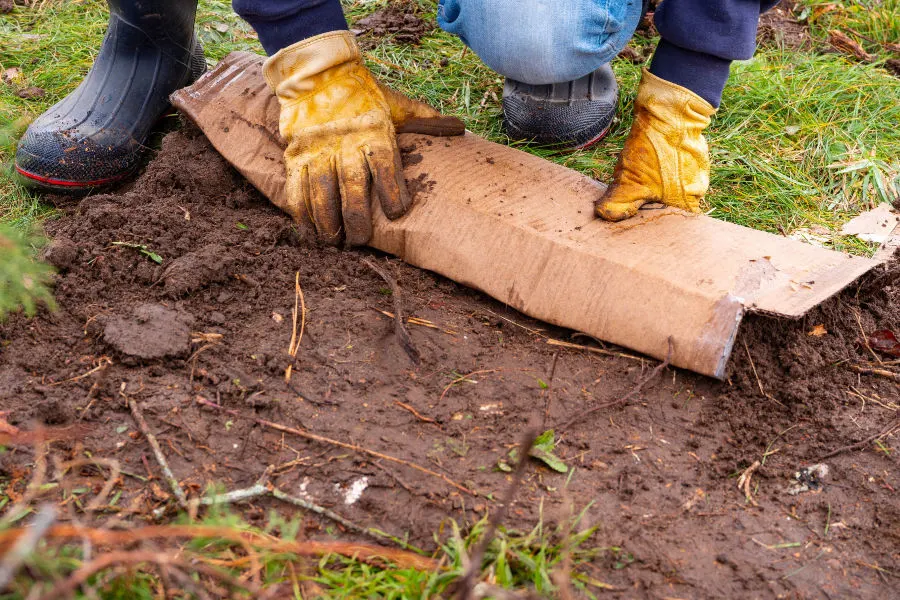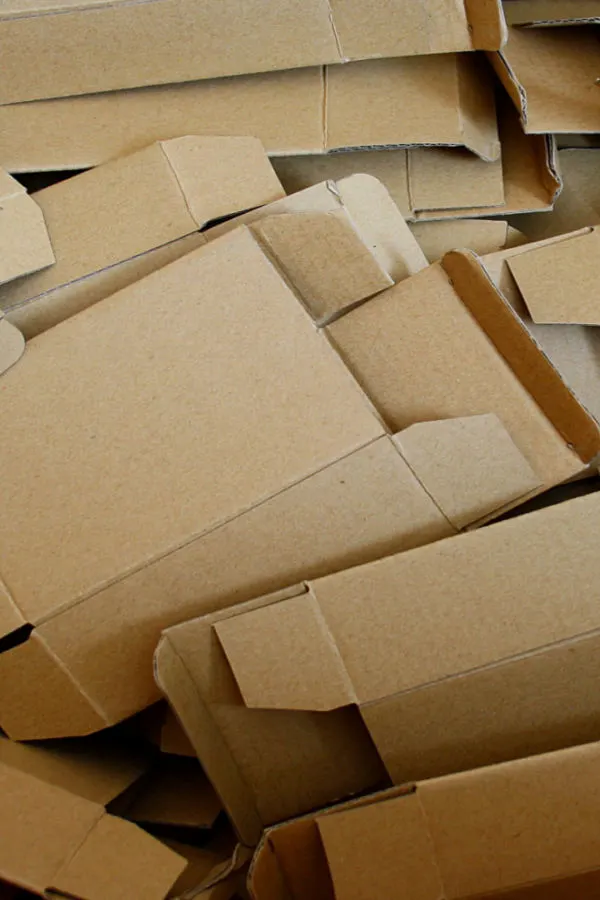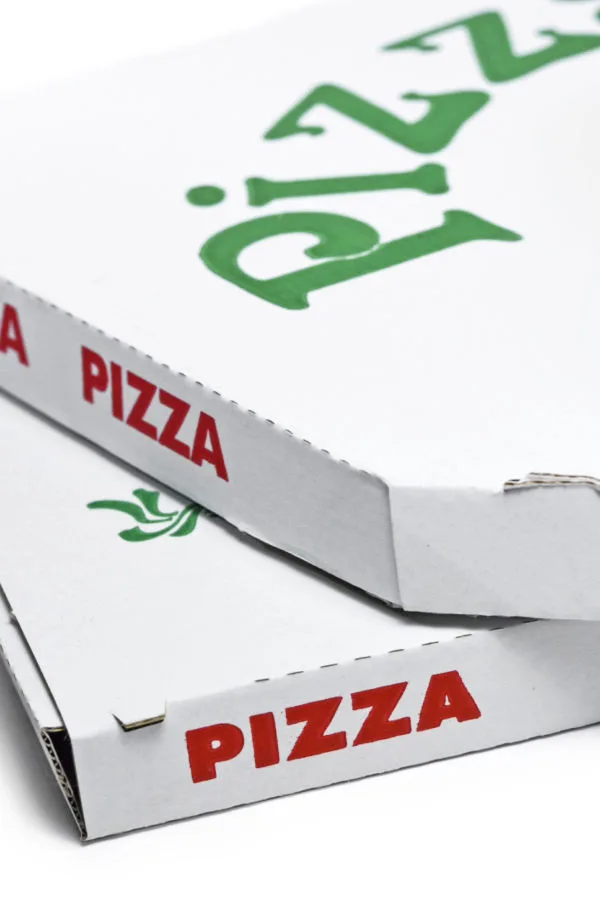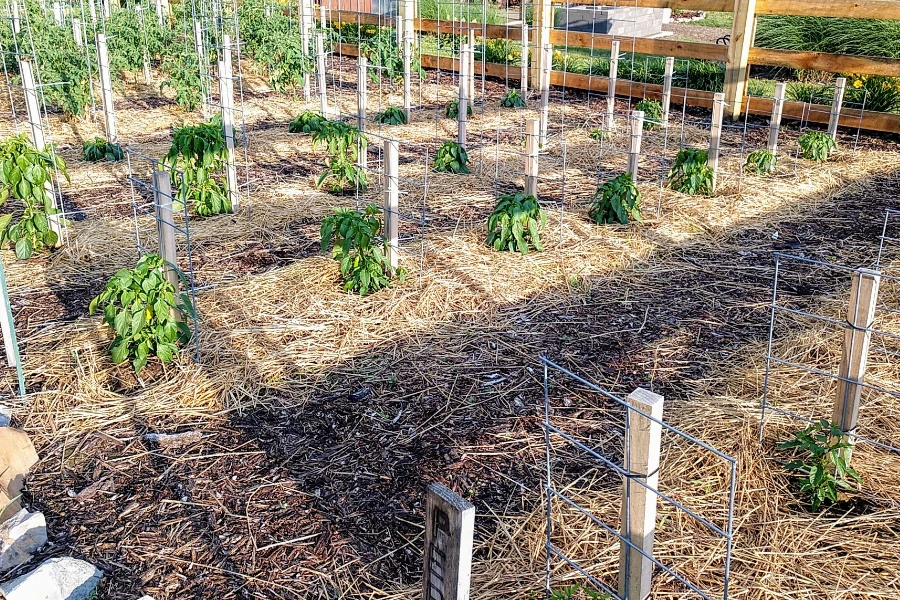When it comes to using cardboard in the garden as a mulch and to suppress weeds, there is definitely a wide range of opinions on whether it’s effective and safe to use – or a danger to your soil and plants.
We certainly get a fair number of emails and messages every year on the topic. To be honest, those emails come with some pretty good questions about its safety and use. Questions like:
- Can I use cardboard to mulch around my vegetable plants in the garden?
- Are there chemicals in cardboard that can get into my soil, plants and vegetables?
- Can I put cardboard in my compost bin?
- What about colored cardboard, is it safe in the garden?
So what are the answers to the thought provoking cardboard questions above? The truth is, there are several correct responses to each and every one – and we will cover them all in today’s article!

The Low Down On Gardening and Cardboard
When it comes to using cardboard in the garden, where you use it and what type of cardboard you are using can make all the difference in its safety and effectiveness. Some types of cardboard can be used without worry in the garden and your compost pile. Meanwhile, other types of cardboard should be avoided all together.
To help answer when and where to use it, we will take an in-depth look at the pros and cons of cardboard in flowerbeds and gardens – as well as give some helpful guidelines as to which cardboard is safe to use on your soil.
Using Cardboard In The Garden – Is It Safe, Or Not?
The Pros – Using Cardboard In The Garden
Cardboard proponents will tell you that it is one of the best and most economical ways to stop weeds. After all, in a world where on-line purchases bring cardboard boxes to a home on a fairly consistent basis, it certainly is abundant. And even better, it’s free!
In addition, those on the pro-cardboard side will also tell you there are other major soil improving benefits. Like helping to retain valuable moisture in the soil. And, increasing earthworm activity in the soil below where it is used.

Finally, those on the cardboard side will tell you that it is 100 percent recyclable. And as it breaks down, it helps to add valuable organic matter to the soil. Organic matter that not only increases nutrient levels, but also helps build better soil structure.
The Cons – Using Cardboard In The Garden
On the other hand, there can be some drawbacks when using cardboard in your garden and flowerbeds. For starters, there is the question of its safety – for the soil, your plants, and ultimately you.
Depending on how and where the cardboard is made, it can contain a long list of chemicals and glue compounds, both of which can leach into the soil. Add to that, many cardboard products also contain man-made ink compounds that can also soak into the soil as well. Some even contain small amounts of plastic that won’t decompose.
Not only can these compounds and chemicals contaminate the soil, but they can also soak into the roots of your plants. That can be quite concerning, especially if you happen to be growing vegetables you consume.

But the issues with using cardboard don’t end with soil and plant safety. Many cardboard boxes contain a thick waxy coating on the outside. The coating is put on the boxes to help waterproof them and their contents. A great example of this is a pizza box, which is often wax-coated to keep heat in and moisture out.
Unfortunately, when used in a garden setting, the waterproof coating can keep valuable moisture from getting to a plant’s roots below the soil surface. Even more, the coating also holds in moisture and gasses, trapping them under the soil. And that can increase the likelihood of a plant rotting out.
The Ultimate Question – Should I Use Cardboard In The Garden – Or Not?
So with all the back and forth, the million dollar question is, should you use cardboard or not? For us, it all comes down to using it in certain situations, and only if it is 100 percent chemical free.
In the old days when newspapers were more common, avoiding shiny newspapers and magazine paper in a garden was a must. It was all because many of the dyes and coating could easily leach in and contaminate the soil.
In exactly that same line of thought, you should avoid any ink-filled cardboard around garden soil too. There is simply too much risk of questionable chemicals leaching into the soil. In addition, coated cardboard’s ability to repel water and gasses makes it a poor choice around plants.
How To Know Which Cardboard Types To Use
The good news is there are 100 percent compostable, dye-free cardboard products that can be safe to use! And there are a few secrets to knowing which cardboard boxes are safer than others.

For starters, look for boxes that have a dye-free and/or 100% recyclable stamp or label. Some cardboard boxes will even have an organic cardboard stamp that identifies that it contains only safe and biodegradable material and glues. As an additional good “rule of thumb” use only boxes that are colorless and coating free.
Where To Use – Using Cardboard In The Garden
We still shy away from using cardboard right up near our vegetable plants. For us, it just doesn’t seem necessary when we can use organic mulch such as straw, grass clippings, or shredded leaves.
With that said, cardboard can be excellent for placing in walking rows and covering with mulch to prevent weeds. Using cardboard here not only blocks weeds, but it can also extend the life of your mulch on top as it can’t sink into the soil below. It is absolutely perfect for using under the walking rows of a Raised Row garden. See: Raised Row Gardening – Vegetable Gardening Made Easy
Cardboard can also be a great solution in flowerbeds where stubborn weeds such as thistle and quackgrass are hard to control with a mulch only approach. By placing a few layers of cardboard underneath the mulch, you can finally snuff out the weeds for good!

In all of the situations above, it is still always a good idea to use cardboard that is coating and dye free. This will still allow moisture and gases to move freely below and above the soil.
Here is to using cardboard in your flowerbeds and garden without worry – and to keeping those weeds down too! Happy Gardening, Jim and Mary.
Jim and Mary Competti have been writing gardening, DIY and recipe articles and books for over 15 years from their 46 acre Ohio farm. The two are frequent speakers on all things gardening and love to travel in their spare time.
As always, feel free to email us at thefarm@owgarden.com with comments, questions, or to simply say hello! You can sign up for our free email list in the subscribe now box in the middle of this article. Follow us on Facebook here : OWG Facebook. This article may contain affiliate links.
